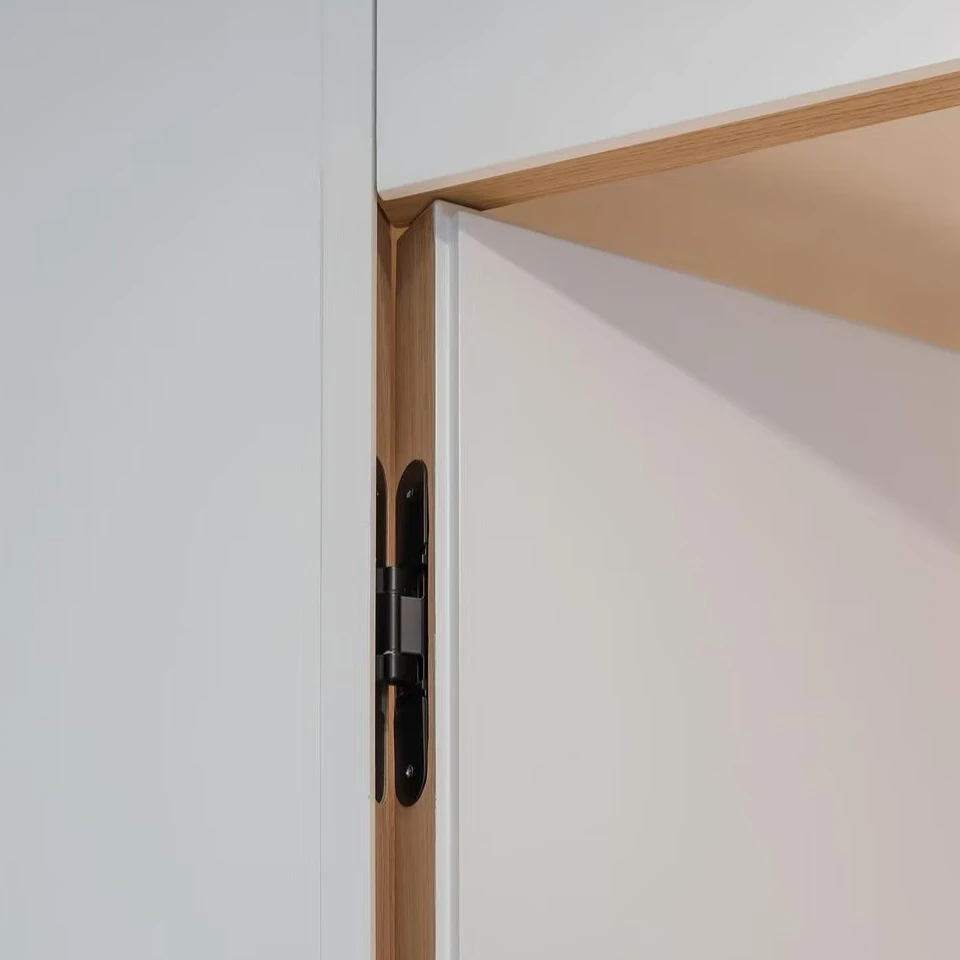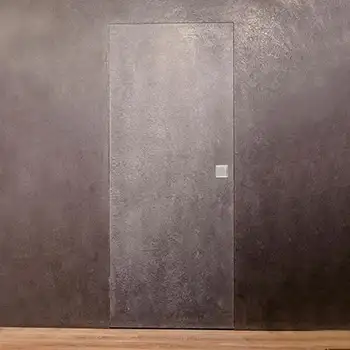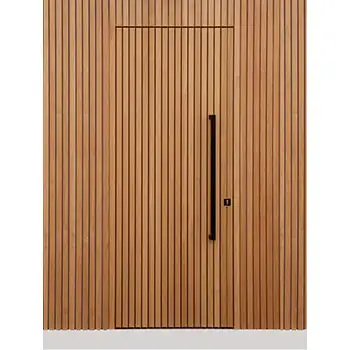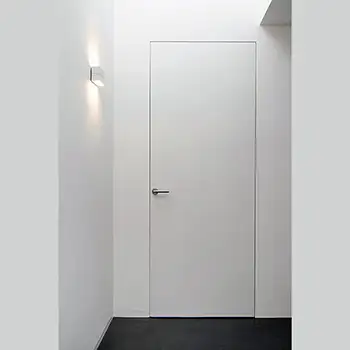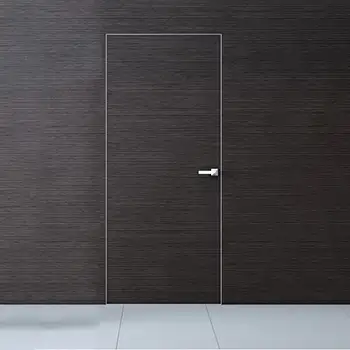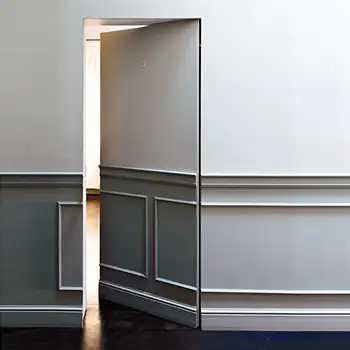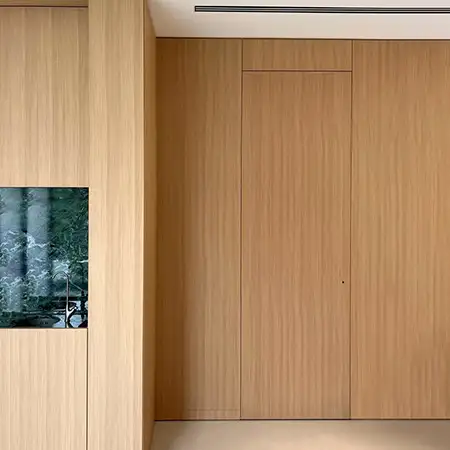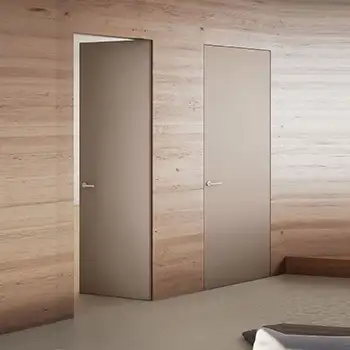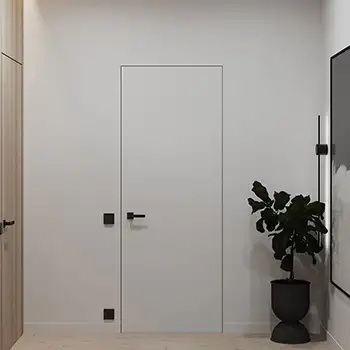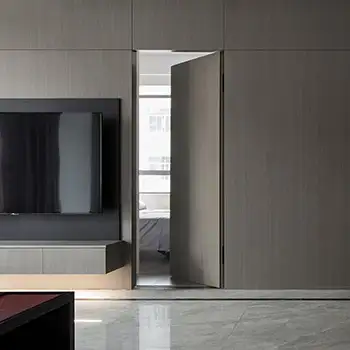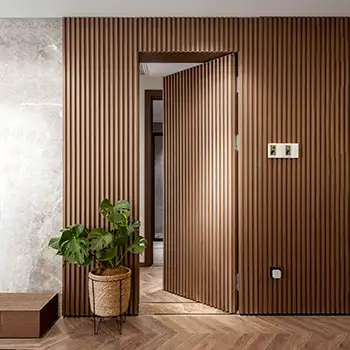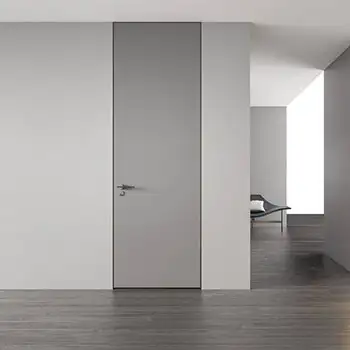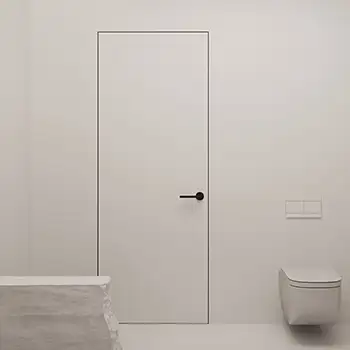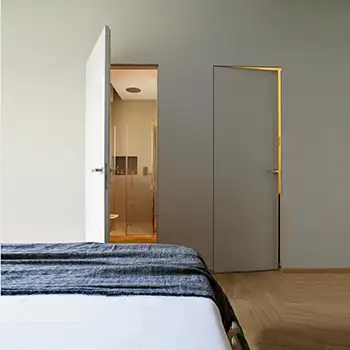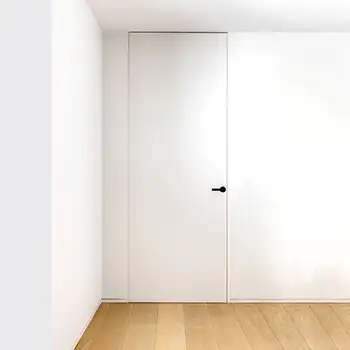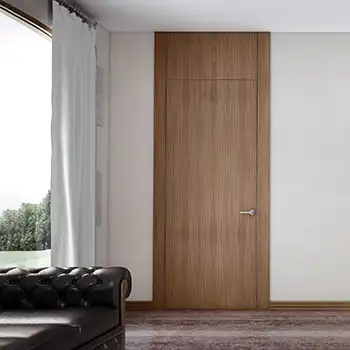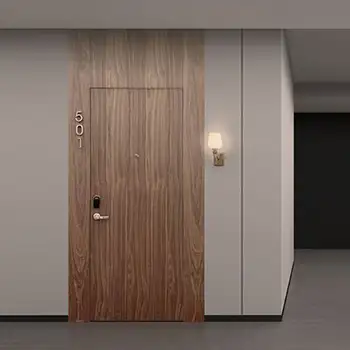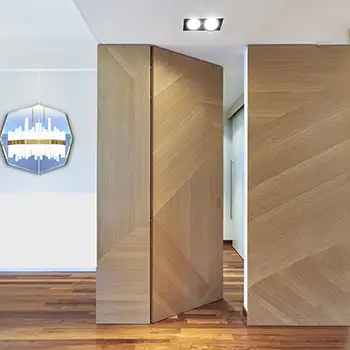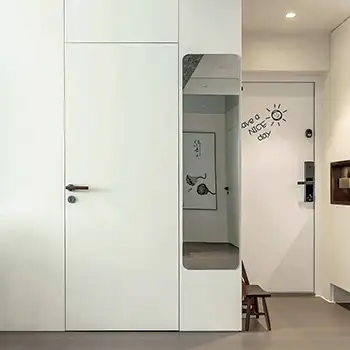What Are Trimless Interior Doors?
In the realm of modern architecture and interior design, trimless doors have emerged as a popular choice for homeowners and designers. This innovative approach to door design offers a sleek, minimalist aesthetic that enhances the overall look of any space. In this article, we’ll explore what trimless doors are, their benefits, and how they can transform your home.
Trimless doors are designed without traditional framing or molding around the edges. Instead, they create a seamless transition between the door and the wall, making them virtually invisible when closed. This clean look is achieved through precise installation techniques that ensure the door sits flush with the wall surface.
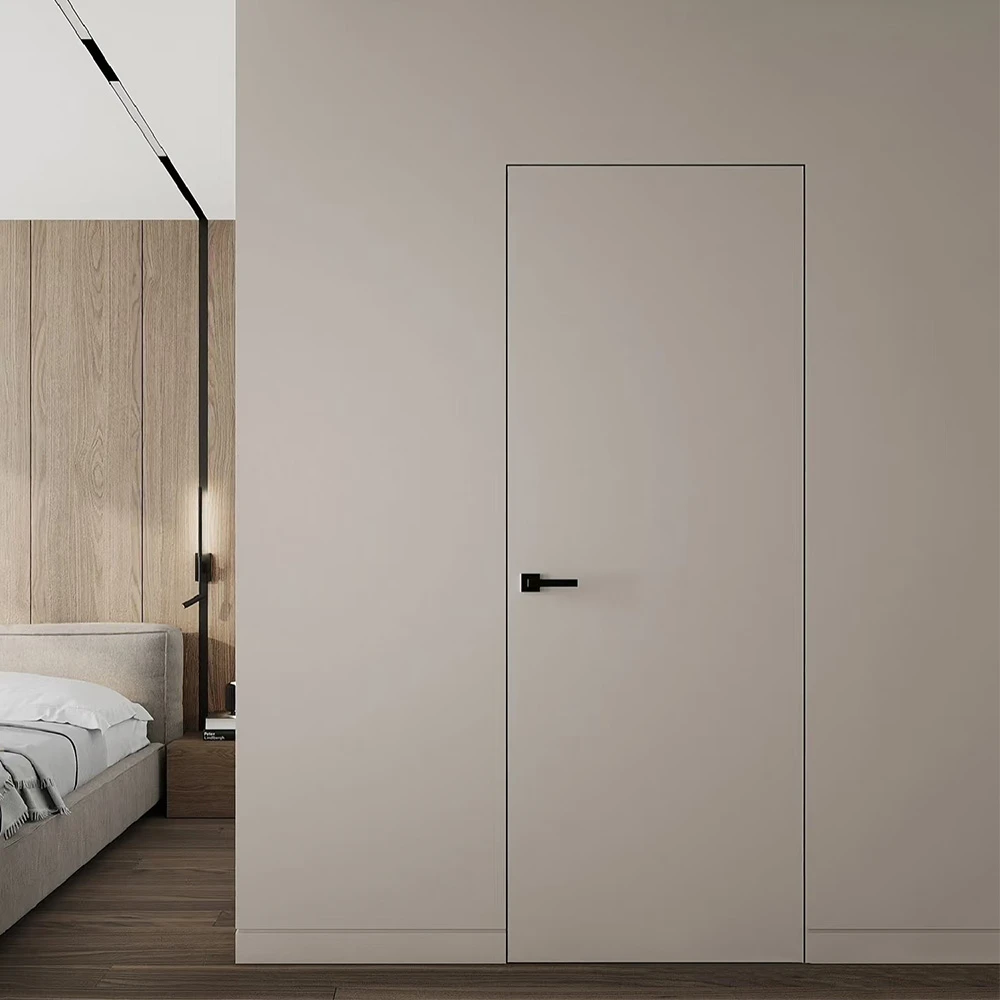
What Are Trimless Interior Doors Structure
1. Door Leaf structure
- Outwards swing: normal flat edge door slabs
- Inwards swing : The door edge feature a rebate slot on the top, left, and right sides. This rebate will accept a frame stop when the door is closed, ensuring that the door fits snugly within the frame without overlapping, and remains flush with the wall.
2. Door Frame structure
1- wood Door frame: The wood door frame features a rebate and slotting design. The rebate allows the surrounding wood wall panel to extend close to the door slab without overlapping or interfering, ensuring a clean, flush fit. On the back of the wood wall panel, a plug fits into the slotting along the frame, securely holding the panel in place. This slot and plug mechanism prevents movement and maintains a seamless appearance. The rebate ensures alignment, offering both aesthetic appeal and structural stability. However, this design is limited to wood wall panels, as other materials cannot accommodate a plug at the back.
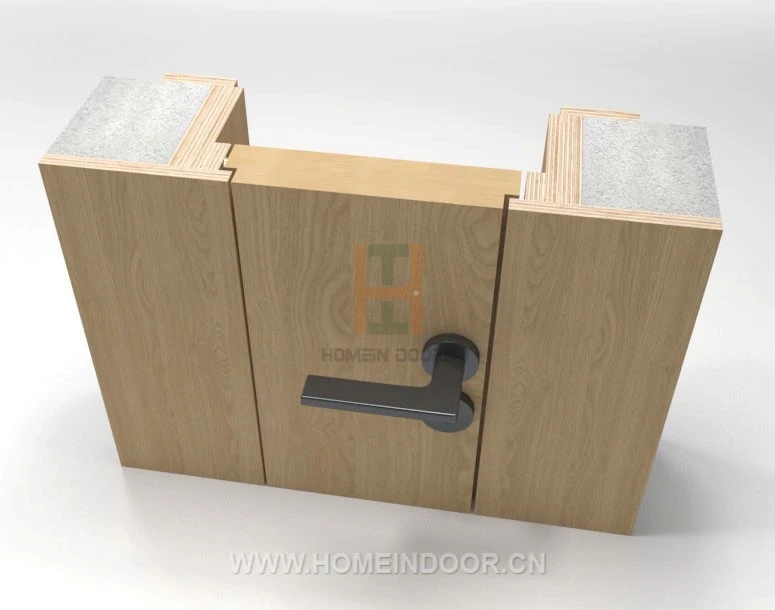
2- Aluminum door frame:The aluminum door frame also incorporates a rebate and slotting design but with a slight variation. The rebate allows the surrounding wall panel to extend close to the door slab without interfering. The slotting, positioned at the end near the door, allows the wall panel to extend into it and be securely held. This design is versatile and can accommodate a variety of materials such as wood, plasterboard, plaster, stone, and tile. It doesn’t require a plug at the back, making it suitable for a wider range of wall panel materials.
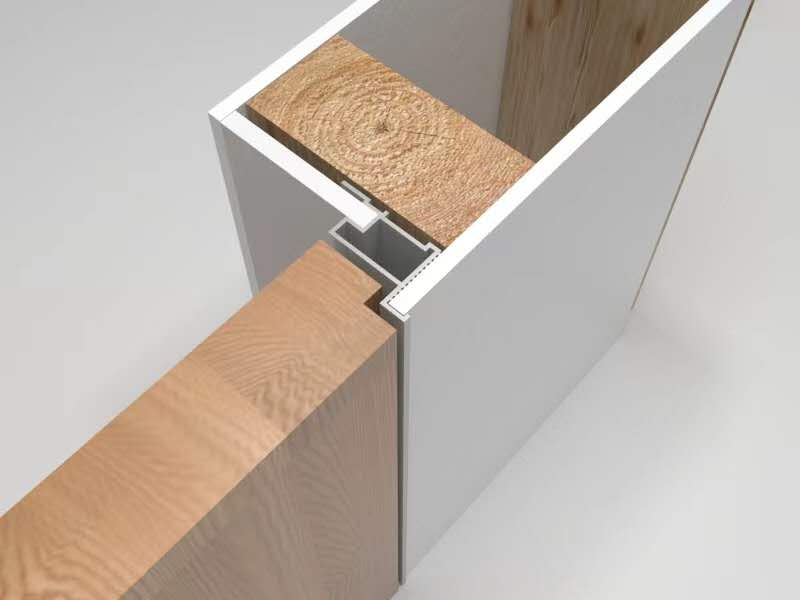
What material is made of trimless door?
1. Trimless Door leaf material
- Solid Wood: trimless door leaf can be made of any species of solid wood, such as oak wood, walnut wood etc
- Composite wood: trimless door leaf can be made of a more economical material such as MDF or plywood as face panel, with soft wood stile & rail, and solid or hollow core
- Calcium silicate board:a new trend for trimless door leaf face panel is Calcium silicate board, after door install finished, you can paint same color with conjoint wall; it also come with soft wood stile & rail, and solid or hollow core
2. Trimless Door Frame material
Wood Door Frame:
- Material Options: Solid wood or composite wood.
- Compatibility: Only suitable for wood wall panel cladding systems.
- Why: The wood frame extends itself wood panel close to the surrounding wall covering, blending seamlessly with it. For this to work, the wall covering must be made of the same material and core as the wood frame.
Aluminum Door Frame:
- Material: Aluminum.
- Compatibility: Suitable for all wall types (e.g., drywall, masonry, wood panel cladding, etc.).
- Why: The aluminum frame features a slotting mechanism that allows it to accept surrounding wall covering extensions in any material, effectively concealing the frame and making it adaptable to different wall types.
Trimless interior door hardware
1. Concealed Hinges
Description: Hidden within the door and frame, these hinges allow the door to open and close without visible hardware, maintaining a clean look. it can also come with a self-close function
Benefits: They provide a seamless appearance and can support heavy doors.
| Normal Concealed Hinges | Self-close Concealed Hinges |
|---|---|
 |
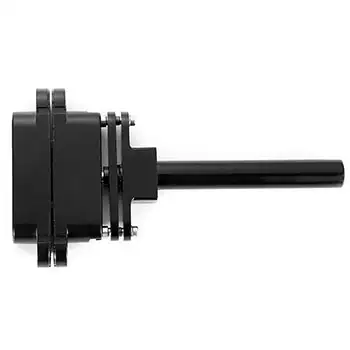 |
2. Flush handleless lock
Description: A handleless lock is a type of locking Push-to-Open Mechanisms designed to operate without traditional handles or knobsBenefits: A handleless lock is an innovative solution designed to provide security while maintaining a sleek, minimalist aesthetic, Ideal for maintaining the minimalist design and preventing snagging or obstruction.


Benefits of Trimless Doors
1. Aesthetic Appeal
Trimless doors create a sleek, modern aesthetic that enhances minimalist design. By eliminating traditional framing, these doors blend seamlessly into walls, creating a clean and uniform look. This style is often used in contemporary interiors to emphasize simplicity and elegance. This minimalist approach allows for more flexibility in decorating and can enhance the perceived space in smaller rooms.
2. Enhanced Space Perception
By eliminating the visual weight of traditional door frames, trimless doors can create an illusion of larger spaces. This feature is particularly beneficial in small apartments or rooms where maximizing space is crucial.
3. Continuous Look, No break wall style
Without the traditional trim, the door can be installed flush with the surrounding wall, creating a smooth, uninterrupted surface. This design eliminates any "break" or gap between the door and wall, providing a continuous, seamless look that enhances the overall aesthetic of the space. It's particularly effective when the walls are finished with materials like drywall, plaster, or custom paneling, as the door essentially disappears into the wall, blending effortlessly.
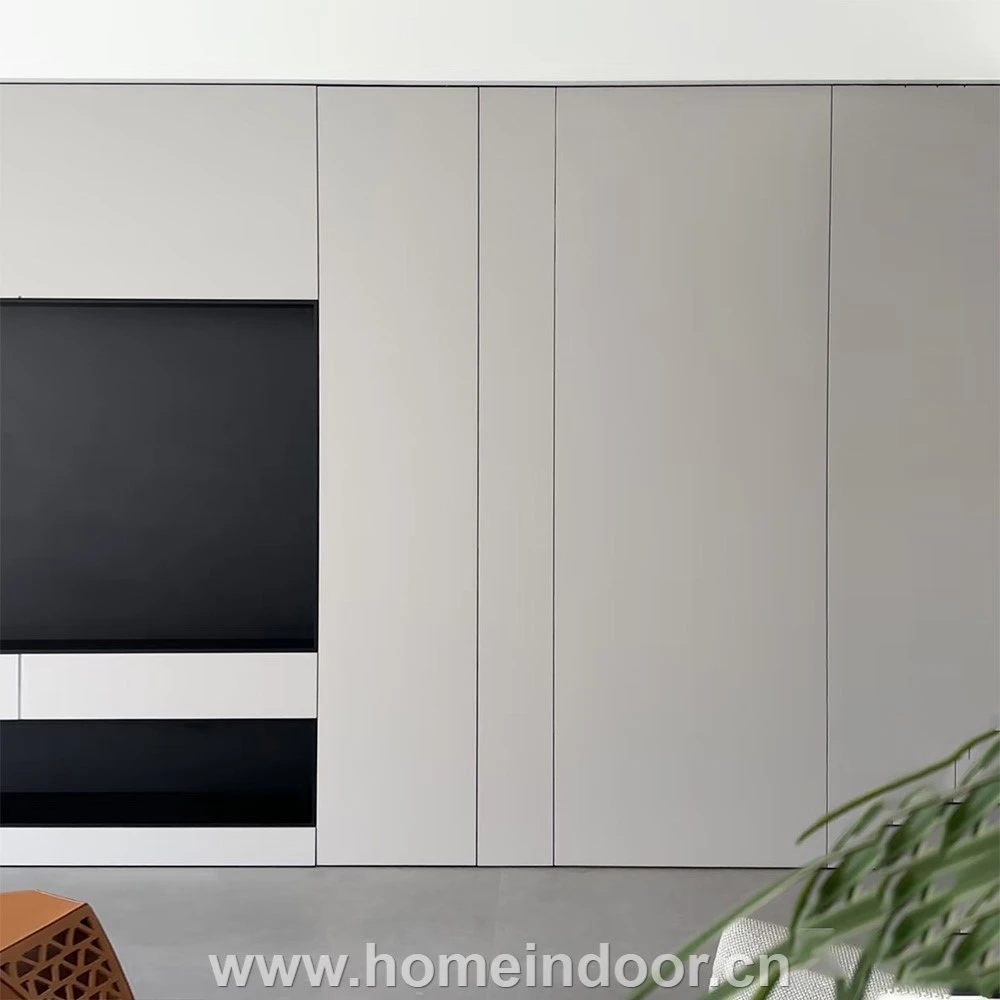
Installation Considerations
While trimless doors can greatly enhance a space, their installation requires precision. Proper framing and wall preparation are essential to achieve that flawless, seamless look. Here are a few considerations for installation:
- Wall Preparation: The wall must be perfectly flat and smooth to ensure a snug fit for the door.
- Hinges and Hardware: Choosing the right hinges and hardware is crucial for functionality while maintaining aesthetics. Concealed hinges are often used for a sleek look.
- Professional Installation: Given the precision required, many homeowners opt for professional installation to ensure the best results.
Conclusion
Trimless doors represent a significant trend in modern interior design, offering both style and functionality. Their minimalist approach enhances the beauty of any space while providing practical benefits such as versatility and ease of integration with smart home technology. Whether you're renovating your home or designing a new one, consider incorporating trimless doors for a touch of elegance and sophistication. As design continues to evolve, trimless doors are set to remain a staple in creating contemporary, seamless interiors.

